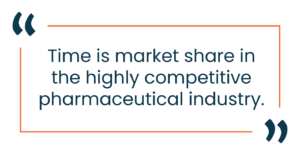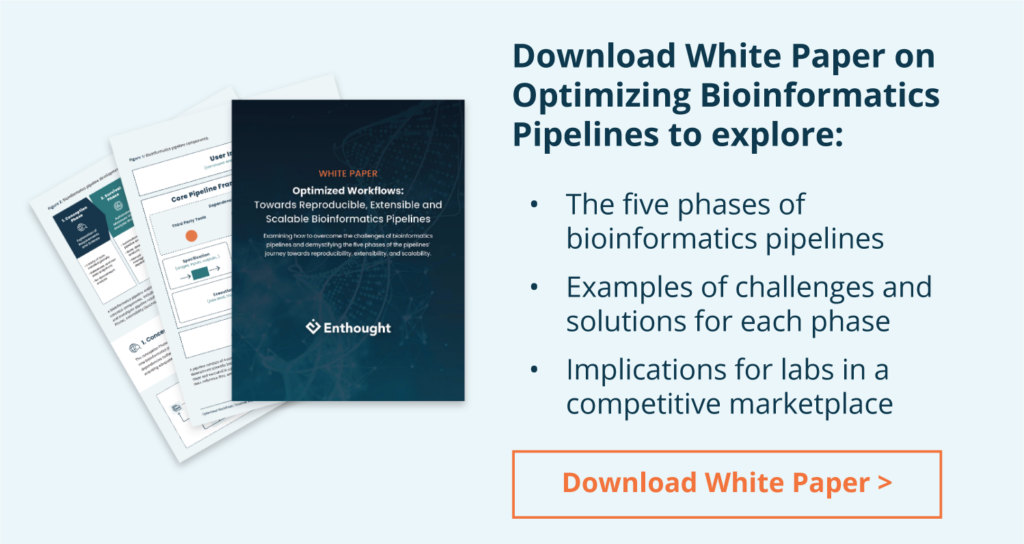
HEK 293 cells grown in tissue culture medium.
Mammalian cell culture is a fundamental tool for many discoveries, innovations, and products in the life sciences. Currently, cells are the smallest unit of sustainable life outside the body, thereby providing an essential platform for testing hypotheses and mimicking biological processes. The applications of cell culture, while not limitless, are plentiful.
Every cell type, downstream application, and use case is somewhat unique. With each new application, a laboratory team must learn, sometimes laboriously, the characteristics of the cell type and redefine optimal growth conditions or purchase the rights of a proprietary method, if it exists. The protein-producing machinery of some cell types can be harnessed to generate large quantities of therapeutic proteins. The complex, diseased state of primary tumor cells might be used to evaluate the response to drug compounds and perhaps even find a unique biomarker “signature” to explain an overly positive or negative result. Some immortalized cells are stored for later use in a quality control assay. Other cell types may be used to quantify the genomic, transcriptomic, and proteomic in response to external stimuli.
Traditional Workflows Limit the Rate of Discovery
During cell culture analysis, each time a visual inspection is performed under the microscope, observations, and judgments are made about the cell and culture as a whole.
- Are there contaminants in the media?
- Are the cells stressed, perhaps as indicated by granules?
- What is the density of the cells in the culture dish (e.g. are they overcrowded)?
- What is the morphology of the cell, and is it consistent with expectations?
- Is it ready for the next step in the protocol?
Any of these visual observations can affect the cells and therefore the experiment. The uniqueness of each cell type and its associated experiment requires that the judgments be consistent and repeatable for optimal results.
 While a myriad of hardware exists to automate the physical manipulation processes, there is still a heavy reliance on manual visual observations in the traditional lab. Each scientist requires extensive hands-on training from experienced senior scientists working with that particular cell in order to make correct judgements and decisions. This reliance on senior expertise and manual methods creates bottlenecks and limitations to discovery.
While a myriad of hardware exists to automate the physical manipulation processes, there is still a heavy reliance on manual visual observations in the traditional lab. Each scientist requires extensive hands-on training from experienced senior scientists working with that particular cell in order to make correct judgements and decisions. This reliance on senior expertise and manual methods creates bottlenecks and limitations to discovery.
As we all know, time is market share in the highly competitive pharmaceutical industry, but most labs today still have a traditional, human-centric approach to research. For companies focused on one application, scientists work on a specific cell type and experiment day in and day out, developing expertise and intuition slowly over time. What about companies exploring multiple cell types, or R&D organizations looking to add a new capability? Senior scientists must first learn each new cell and process, then train their team members, creating additional strain on their own time while further compounding the slower pace of innovation.
Automated Decision-Making Streamlines Processes and Accelerate Analysis
With advanced technologies like artificial intelligence and machine learning, labs can now employ automated decision-making tools that can not only support cell culture analysis but streamline it as well. Instead of a largely manual, human-driven process, a purpose-built application allows the organization to evolve with their cells efficiently and effectively, and in a way that different methods can be easily applied across cell types.
In this modern environment, integrated AI and machine learning tools automate the lab and reduce the burden on researchers, material waste, and the subjectivity of the process. The process becomes much more scalable, exponentially extending the capabilities of the team.
 Instead of a scientist learning and maintaining ten different cell types, each one of them being a little different from the last, that same scientist now has this machine learning tool acting as their eyes and ears. Instead of senior scientists spending weeks or even months training junior scientists on a specific cell type, trained models are available and usable by anyone in the laboratory, even the greenest scientists. And if an experienced scientist departs, taking years of knowledge and expertise with them, the established models ensure there is no impact on the quality and consistency of the established process. The same models can be used as a starting point for new cell types and studies.
Instead of a scientist learning and maintaining ten different cell types, each one of them being a little different from the last, that same scientist now has this machine learning tool acting as their eyes and ears. Instead of senior scientists spending weeks or even months training junior scientists on a specific cell type, trained models are available and usable by anyone in the laboratory, even the greenest scientists. And if an experienced scientist departs, taking years of knowledge and expertise with them, the established models ensure there is no impact on the quality and consistency of the established process. The same models can be used as a starting point for new cell types and studies.
How can AI automate your lab?
Cell culture has the potential to support innovation in countless ways, and the application of AI to cell culture analysis offers meaningful change to the scientists, the lab, and the company. Imagine the possibilities if you strategically leveraged AI and machine learning beyond cell culture analysis and throughout your lab and your team.
Enthought has extensive experience in optimizing R&D labs with tailored digital solutions for science-driven companies of all sizes and stages, from Fortune 500 to startups. Contact our team of experts today to see how we can address your challenges and advance your team’s work.
Related Content
「収益性の壁」を超える:AIの活用で機能性材料開発を戦略から再構築
スペシャルティケミカルおよび素材産業は、コモディティ化と価格競争の激化により、従来の差別化戦略では持続的成長が難しくなっています。こうした中、AIやマテリアルズインフォマティクス(MI)などの先端技術が、R&D戦略の再構築と成長再加速への有力な打ち手として注目されています。
研究開発組織の変革を成功させるためのパートナー選び
現在の競争が激しいR&D環境において、適切なテクノロジーパートナーを選ぶことは、組織にとって最も重要な意思決定の1つです。理想的なパートナーとは、単なるツールベンダーやシステムインテグレーターではなく、生産性を向上させ、イノベーションを加速し、競争力を引き出す解決策を提供する科学的な専門知識と戦略的な洞察を兼ね備えた「変革の同志」です。
「AIスーパー・モデル」が材料研究開発を革新する
近年、計算能力と人工知能の進化により、材料科学や化学の研究・製品開発に変革がもたらされています。エンソートは常に最先端のツールを探求しており、研究開発の新たなステージに引き上げる可能性を持つマテリアルズインフォマティクス(MI)分野での新技術を注視しています。
デジタルトランスフォーメーション vs. デジタルエンハンスメント: 研究開発における技術イニシアティブのフレームワーク
生成AIの登場により、研究開発の方法が革新され、前例のない速さで新しい科学的発見が生まれる時代が到来しました。研究開発におけるデジタル技術の導入は、競争力を向上させることが証明されており、企業が従来のシステムやプロセスに固執することはリスクとなります。デジタルトランスフォーメーションは、科学主導の企業にとってもはや避けられない取り組みです。
産業用の材料と化学研究開発におけるLLMの活用
大規模言語モデル(LLM)は、すべての材料および化学研究開発組織の技術ソリューションセットに含むべき魅力的なツールであり、変革をもたらす可能性を秘めています。
科学研究開発における効率の重要性
今日、新しい発見や技術が生まれるスピードは驚くほど速くなっており、市場での独占期間が大幅に短縮されています。企業は互いに競争するだけでなく、時間との戦いにも直面しており、新しいイノベーションを最初に発見し、特許を取得し、市場に出すためにしのぎを削っています。
R&D イノベーションサミット2024「研究開発におけるAIの大規模活用に向けて – デジタル環境で勝ち残る研究開発組織への変革」開催レポート
去る2024年5月30日に、近年注目のAIの大規模活用をテーマに、エンソート主催のプライベートイベントがミッドタウン日比谷6FのBASE Qで開催されました。
デジタルトランスフォーメーションの実践
デジタルトランスフォーメーションは、組織のデジタル成熟度を促進し、ビジネス価値を継続的に提供するプロセスです。真にビジネスを変革するためには、イノベーションを通じて新しい可能性を発見し、企業が「デジタルDNA」を育む必要があります。
科学研究開発リーダーが知っておくべき AI 概念トップ 10
近年のAIのダイナミックな環境で、R&Dリーダーや科学者が、企業の将来を見据えたデータ戦略をより効果的に開発し、画期的な発見に向けて先導していくためには、重要なAIの概念を理解することが不可欠です。
科学における大規模言語モデルの重要性
OpenAIのChatGPTやGoogleのBardなど、大規模言語モデル(LLM)は自然言語で人と対話する能力において著しい進歩を遂げました。 ユーザーが言葉で要望を入力すれば、LLMは「理解」し、適切な回答を返してくれます。